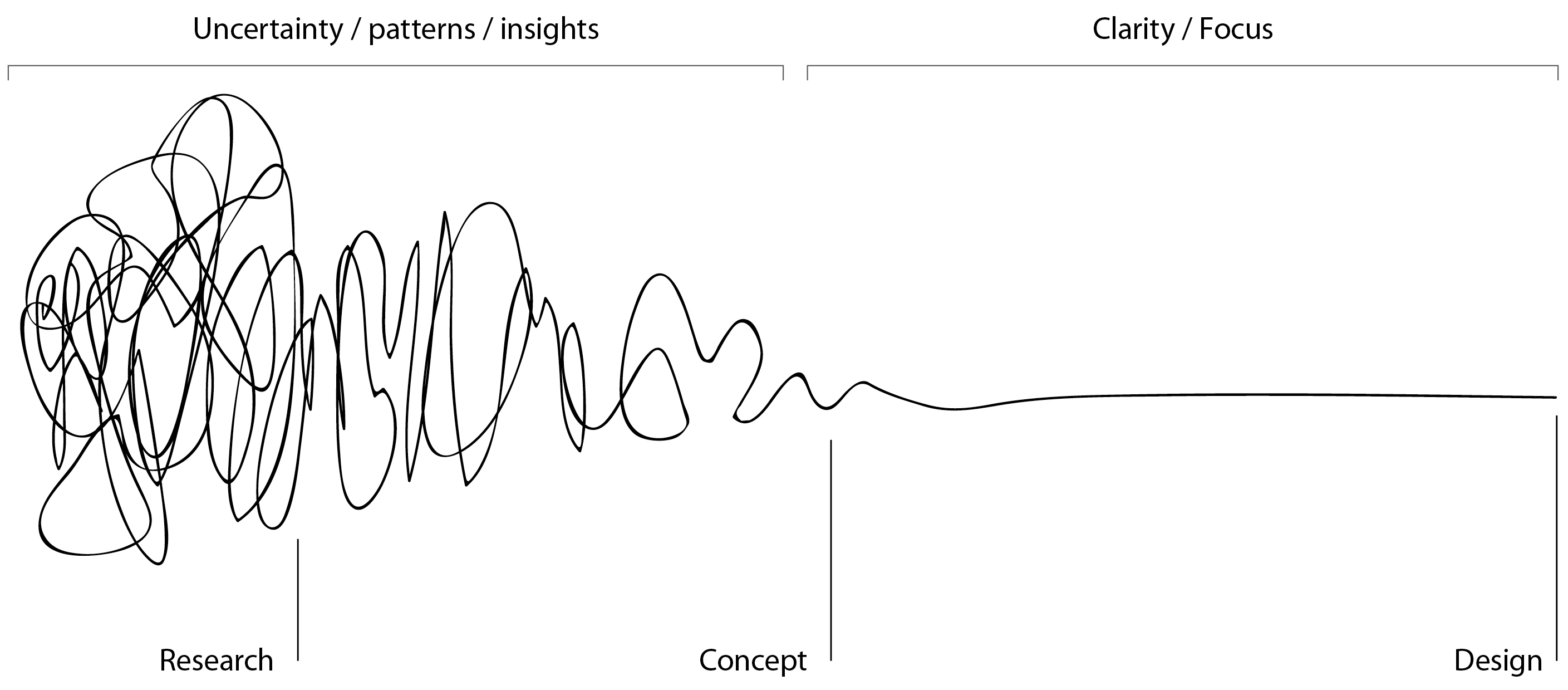 |
| The design process illustrated. Picture from revisionlab.wordpress.com. |
We began by watching the "Story of the Story" commentary for the film "Inside Out," Pixar's film about the emotions in the head of a young girl. In this ten-minute-long video, we saw and heard about the creative process behind the film. As it turns out, creating this film was a huge undertaking.
The director got the initial idea from observing his daughter's emotional process. He wanted to "dramatize her feelings from the inside." This is where he started to deal with the concept of empathy in the creative process. He had an idea and began looking for ways to execute it.
From this initial concept, he and his team started to play with different ideas, moving into the define, ideate, and prototyping phases of the creative process. He knew he wanted the film to revolve around optimism. By the end of the process, "optimism" became the character, Joy. One of the initial storylines developed was to make a film about the main human character going to buy potato chips and the emotional experiences involved in making that decision. Another storyline featured the main human character being unconscious.
The director knew he wanted Amy Poehler to voice Joy. He visited her, had her read the script and make any additions she saw fit for the character. The script session went so far as to lead the team to alter Joy's appearance, based on Amy Poehler's interpretation of the character.
At another point in making the film's story, the team needed a different character to interact with Joy. The director took himself away from his work and went for a walk in the woods one day. He had an epiphany to pair Joy with Sadness. We sometimes must take ourselves out of our work to gain a fresh perspective or, if we are lucky, to have an epiphany.
 |
| GIF found on Tumblr |
After watching "The Story of the Story", we watched "The Shapes of Stories" lecture by Kurt Vonnegut. Vonnegut discussed a framework for telling different types of stories. He first uses two examples. One tells the story of a character getting in trouble and making a comeback. The other tells the story of a character finding fortune and losing it. Vonnegut talks about how good those stories are but then gives his third example: Cinderella. The plot of Cinderella take Cinderella from misfortune to fortune, and back again. There are many ways of using creative energy and crafting a final product, but often times, it is necessary to discover innovative ways to get to the end goal.
Finally, we listened to Ira Glass's "On Being Creative" from "This American Life." In this snippet of the interview where Glass discusses the phase of developing the skills to create work that satisfies the creator. He stressed that when first starting out, we all know the things we make fall short of our expectations. We think those things are good but not where we want them. Glass says that everyone goes through this phase. To get past it, we must continue to create and develop our skills. I know that I am still in this phase in many parts of my life, especially my photography. My photos aren't yet where I want them to be, but I have made so much progress since I first picked up a camera. My style has evolved. I have employed different techniques, learning as I go. After all, it's more about the journey than the destination.
We ended the class with a discussion on the differences between advertising and public relations publications. With public relations publications, there is control over the publication and the audience segment; whereas, with advertising, there is control over the space in which an ad appears and not so much control in who exactly sees an ad.
I am very excited to begin this creative journey. There are so many things to learn about design that I know will be very beneficial for me in the future, both in and out of the professional world.

No comments:
Post a Comment